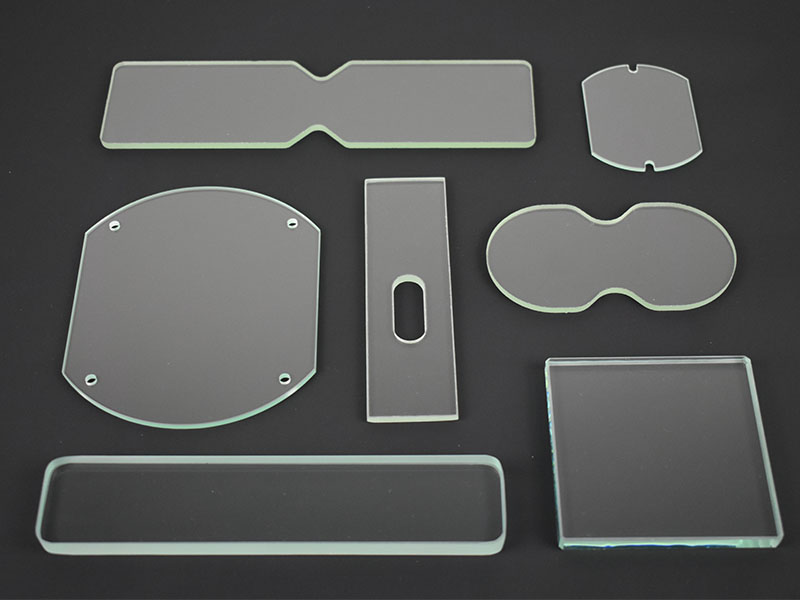Production Method of LOW-E Glass
Click:
-Time:2022-11-10 14:27
Low emissivity coated glass is coated with a film containing pure metallic silver based on the offline coating process to reduce the emissivity of the glass and improve the hollow performance. At the same time, the glass has good spectral selectivity. On the basis of a large amount of visible light, it can prevent a considerable part of the outdoor lines from entering the room, which not only keeps the indoor light bright, but also reduces the indoor heat load to a certain extent.


Two production methods of Low-E glass are:
1、 On line pyrolytic deposition
On line high-temperature pyrolysis deposition method. Online Low-E glass has products from many enterprises in the United States. For example, PPG enterprise Ford enterprise. These products are achieved in the cooling process of float glass. Liquid metal or metal powder is sprayed directly onto the surface of the hot glass. As the glass cools, the metal film becomes a part of the glass. As a result, the film is hard and durable. The "Low-E" glass produced by this method has many advantages: it can be hot bent and tempered, does not need to be used in a hollow state, and can be stored for a long time. Its disadvantage is its poor thermal performance. Its "u" value is twice that of sputtered "Low-E" coated glass. If you want to improve its thermal properties by increasing the film thickness, its transparency is particularly poor.
2、 Off line vacuum sputtering method:
"Low-E" glass produced by sputtering is different from that by high-temperature pyrolysis deposition, and the sputtering method is offline. For the production of Low-E glass by sputtering process, a layer of pure silver film is required as the functional film. The pure silver film is between two layers of metal oxide film. The metal oxide film protects the pure silver film and acts as an intermediate layer between the film layers to increase the purity of color and light transmittance.
If you are interested in the or need to consult, please call us +8613569413718.Pan Chao special industrial glass, Customize your persoalised glass products.
Welcome sending your inquiry: Phone :+8613569413718 Email: info@panchaoglass.com
If you are interested in the or need to consult, please call us +8613569413718.Pan Chao special industrial glass, Customize your persoalised glass products.
Welcome sending your inquiry: Phone :+8613569413718 Email: info@panchaoglass.com
Related articles
- Reasons for Glass Weathering
- Performance of Borosilicate Glass Mirror
- Characteristics of the High Borosilicate Glass
- What Are the Uses of Quartz Glass?
Recommend
- Comparison Between LOW-E Glass and Ordinary Insulating Glass
- Production Method of LOW-E Glass
- Far Ultraviolet Optical Quartz Glass - JGS1
- What is Infrared Optical Quartz Glass
- Precautions for Use of Quartz Glass
- Methods to Reduce Glass Weathering
- Reasons for Glass Weathering
- Precautions for Use of Quartz Glass
- Technical Indexes of Mirror Glass
- Packaging Marking, Packaging and Transportation of Glass
Rank
- Application of high temperature resistant glass
- Precautions in the process of quartz tube cutting and picklin
- What Glass Has the Highest Temperature Resistance
- Importance of Optical Glass Lens
- Comparison Between LOW-E Glass and Ordinary Insulating Glass
- What are the advantages and disadvantages of quartz tube heat
- ultra-thick tempered sight glass for submarine
- What is Infrared Optical Quartz Glass
- The process of toughening of borosilicate tempered sight glas
- The difference between high borosilicate glass, medium borosi
Latest articles
- Comparison Between LOW-E Glass and Ordinary Insulating Glass
- Production Method of LOW-E Glass
- Far Ultraviolet Optical Quartz Glass - JGS1
- What is Infrared Optical Quartz Glass
- Precautions for Use of Quartz Glass
- Methods to Reduce Glass Weathering
- Reasons for Glass Weathering
- Precautions for Use of Quartz Glass
- Technical Indexes of Mirror Glass
- Packaging Marking, Packaging and Transportation of Glass

